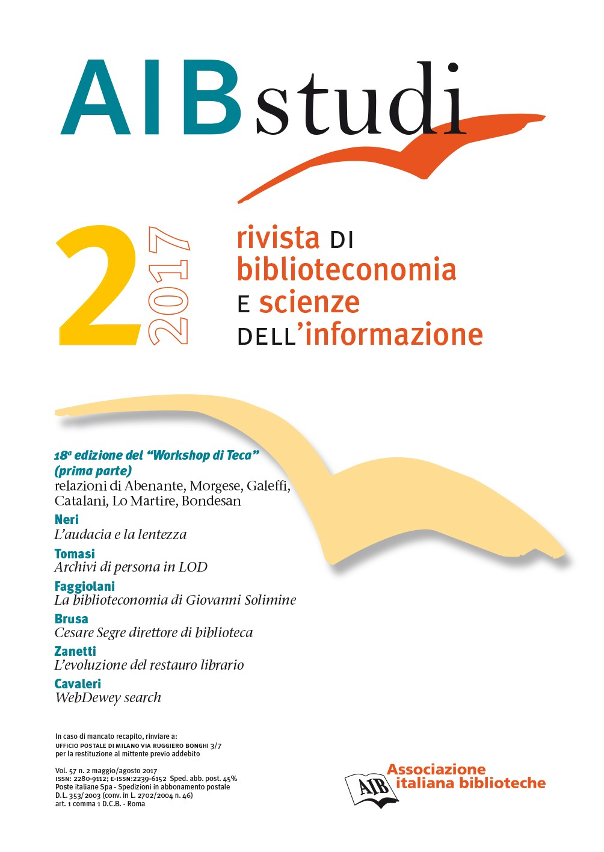If the catalogue spoke... Five axioms of catalogue communication
DOI:
https://doi.org/10.2426/aibstudi-11648Keywords:
catalogues, communication theory, cataloguingAbstract
The article applies the criteria used in communication analysis to the ‘catalogue communication’, namely to the conscious or unconscious information exchange between the catalogue and the user realized during the whole research activity. The triad sender-message-receiver can be pinpointed in libraries/librarians-search systems-users. Inspired by Paul Watzlawick’s theories, five axioms of catalogue communication are introduced: 1) a search system cannot ‘not’ communicate, even in case of a 0 results query; 2) in addition to search results, search systems establish a meta-communication with users; 3) the communication between catalogue and user is articulated by the punctuation, that is the sequence of actions performed by the user (search, navigation, selection, etc.); 4) two communications exist: a ‘digital’ one, that is the data, and an ‘analog’ one, that is the information about the catalogue (which libraries are included, cataloguing coverage and features, etc.); 5) catalogue communication can be either symmetric, when both sender and receiver are at the same level, or complementary, when a gap of status exists.
Considering the catalogue a communication tool allows an analysis by means of factors and techniques that realize an effective communication (professionalism, trust, knowledge about the audience, abilities to develop the subject, to foresee the objections, to receipt feedback, etc.) in order to improve catalogue’s functionalities.
Downloads
Downloads
Published
How to Cite
Issue
Section
License
Copyright (c) 2017 AIB studi

This work is licensed under a Creative Commons Attribution-ShareAlike 4.0 International License.









